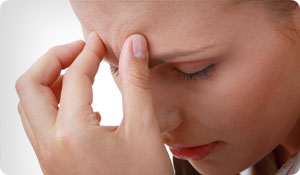
As anyone who has struggled with pain or depression can attest, the two are strongly linked. Being in pain is depressing. Being depressed intensifies pain.
People who suffer from chronic pain are three times more likely to develop mood or anxiety disorders, and depressed people are three times more likely to develop chronic pain. In fact, about 75 percent of individuals with clinical depression go to the doctor to complain about physical symptoms, not to report feelings of depression.
Pain and Depression
People who have depression report a wide range of physical symptoms. Often they experience pain in more than one area. Pain and depression move in tandem, too. As the number and severity of physical symptoms increase, so does the severity of psychological complaints.
Here are some of the most frequently reported symptoms of depression-related pain:
- Headache
- Back, neck, or chest pain
- Stomachache and gastrointestinal problems, such as constipation
- Non-specific, generalized pain or weakness
- Muscle tension
- Dizziness and fainting
- Inflammation
Headaches are one of the most common physical complaints in people who are depressed. There's a strong association between depression and migraines, which can be frequent and debilitating. In a study that followed people for two years, those with a history of major depression were three times more likely to have their first migraine attack, and those with migraines were five times more likely to be depressed.
Depression can also worsen painful symptoms of other health conditions. For example, severe depression can aggravate rheumatoid arthritis, an inflammatory disease.
Interestingly, reports of depression-related pain can vary between genders and even among people in different countries. Women are most likely to complain of headaches and chest pain, while men commonly report muscle pain (myalgia) and numbness. In Japan, depressed individuals most frequently cite abdominal symptoms, headaches, and neck pain as their primary physical symptoms.
Depression and pain share biological pathways in the brain, which arise from the emotional (limbic) area of the brain. The same chemicals that control pain also control mood. Genetic and environmental factors further influence this process. Experts suspect that chronic pain wears the body down and depletes the biochemicals responsible for regulating pain and mood, causing a negative spiraling affect.
Unfortunately, many primary care physicians do not recognize unexplained pain or vague physical complaints as potential signs of depression, prolonging patients' diagnosis and treatment.
Sources
Shatzberg, Alan F., MD, and Korn, Martin L., MD. "Beyond Depression: The Somatic/Affective Interface." CME Medscape. Web. 13 December 2002. http://cme.medscape.com/viewarticle/446350
"Depression and pain." Harvard Mental Health Letter. Web. September 2004. http://www.health.harvard.edu/mental
Bair MJ, Robinson RL, Katon W, and Kroenke K. "Depression and pain comorbidity: a literature review." Archives of Internal Medicine 163 (20): 2433-45. Web. 10 November 2003.
http://www.ncbi.nlm.nih.gov/pubmed/14609780
Hall-Flavin, Daniel K. MD. "Pain and depression: Is there a link?" Mayo Clinic. Web. 11 October 2008.
http://www.mayoclinic.com/health/pain-and-depression/AN01449
"Pain and Depression." National Pain Foundation. Web.
http://www.nationalpainfoundation.org/articles/98/pain-and-depression
Brooks, Megan. "Antidepressants Ease Depression in Patients With a Physical Illness." Cochrane Database of Systemic Reviews. Medscape Medical News. Web. March 17, 2010.
http://www.medscape.com/viewarticle/719085
Trivedi, Madhukar H., MD. "The Link Between Depression and Physical Symptoms." Primary Care Companion Journal of Clinical Psychiatry 6[supp 1] (2004): 12-16. Web.





